
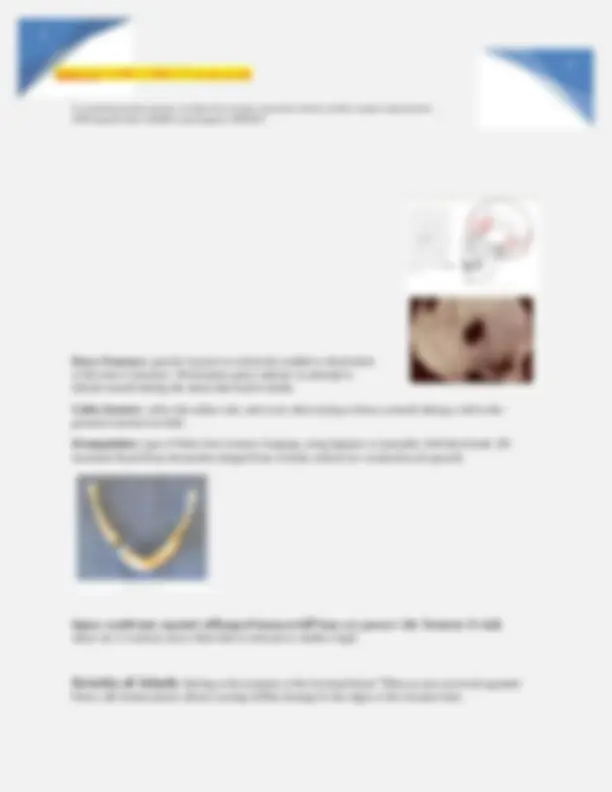
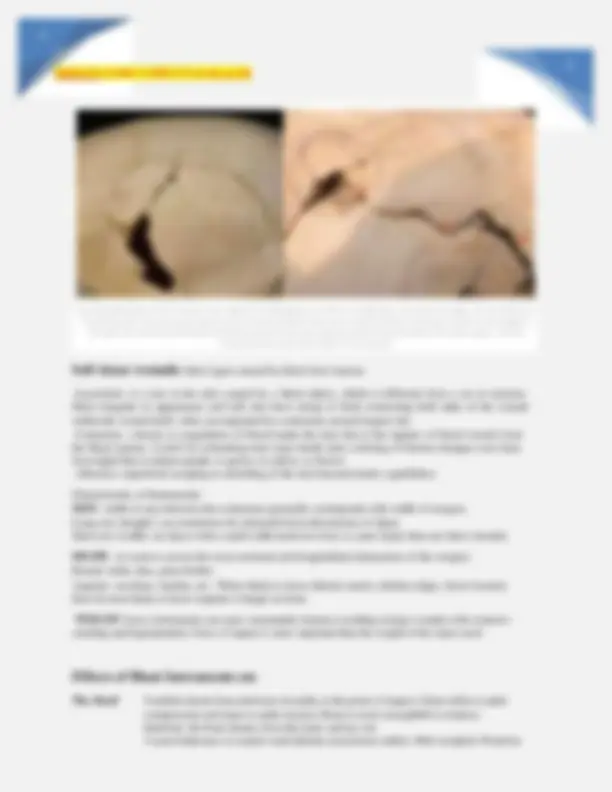
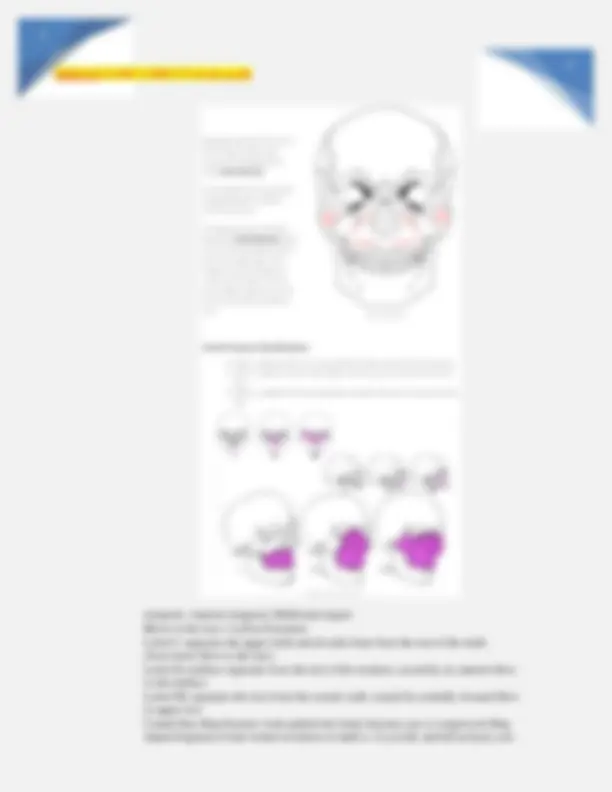
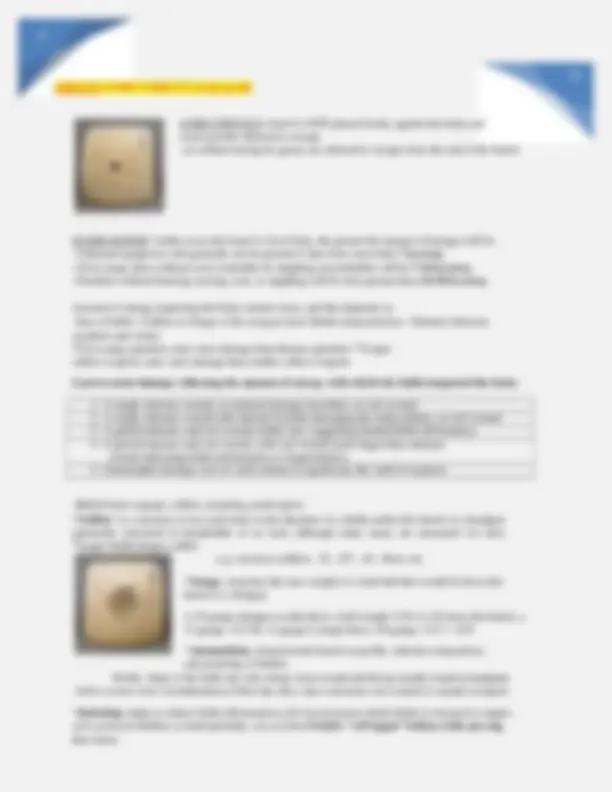
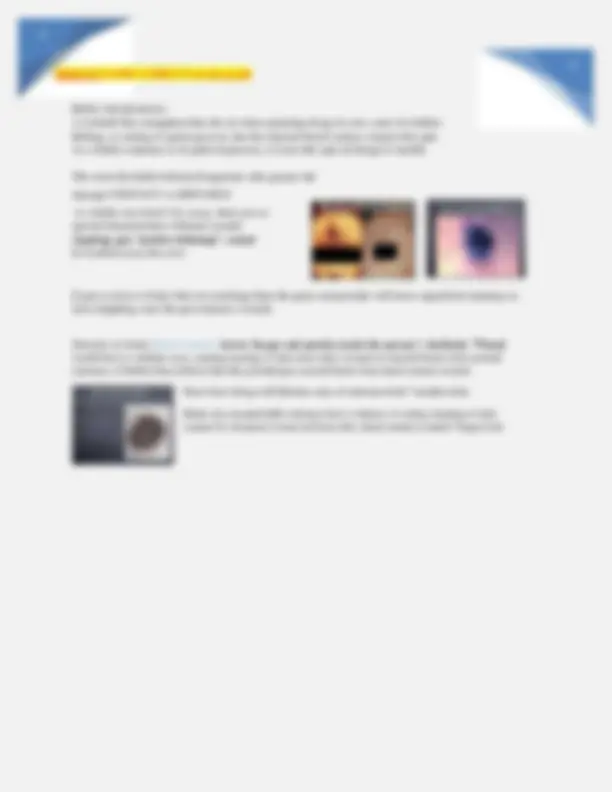
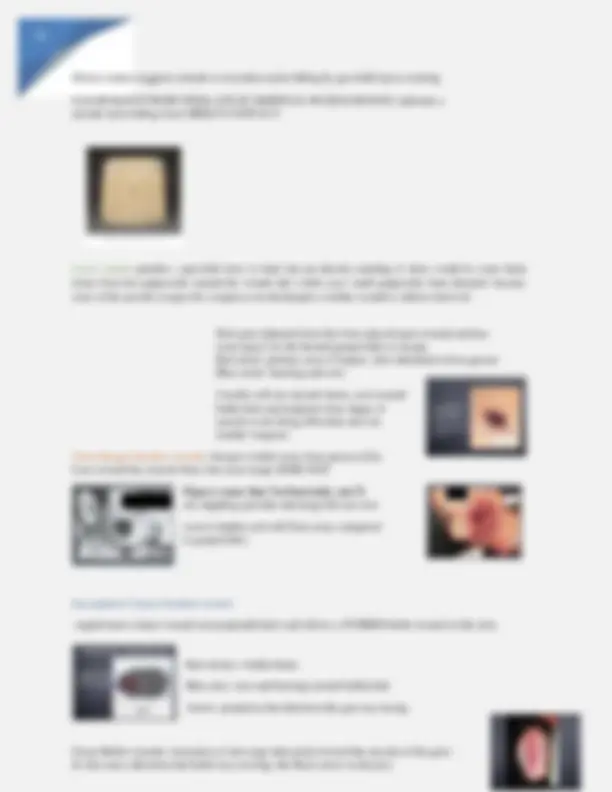
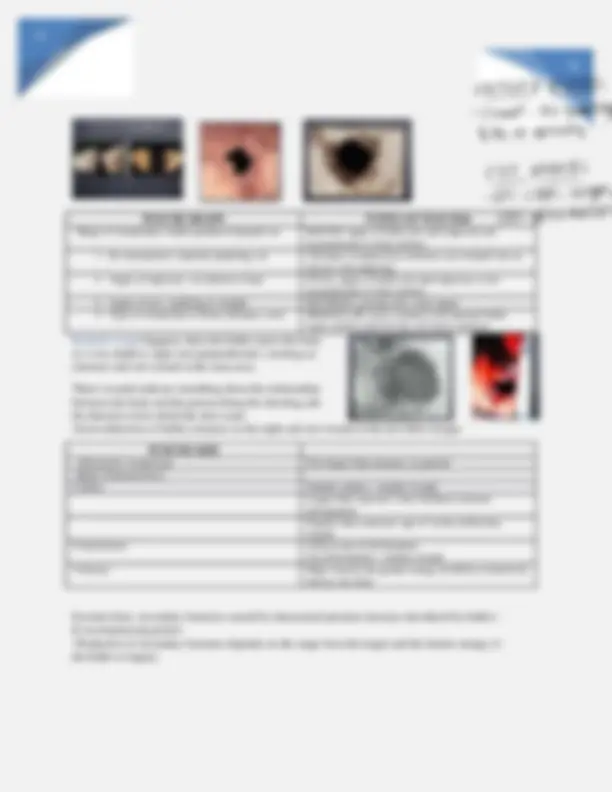
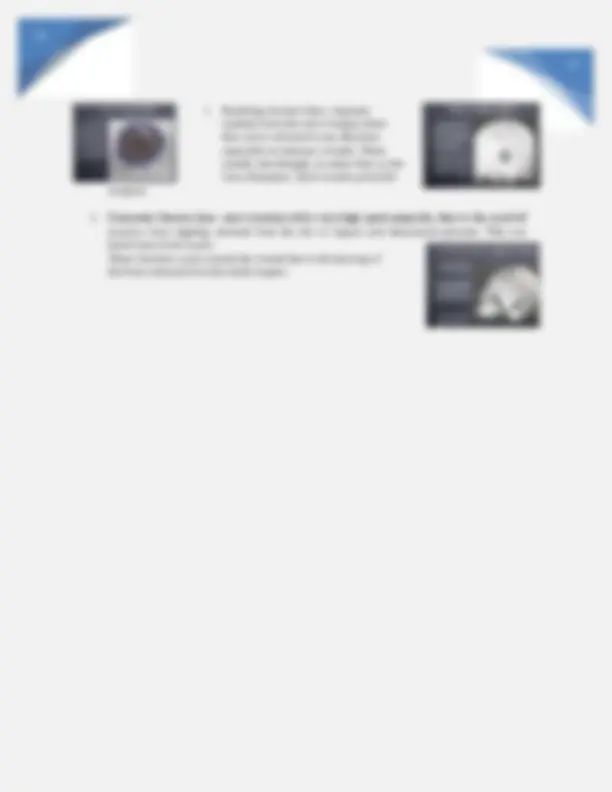
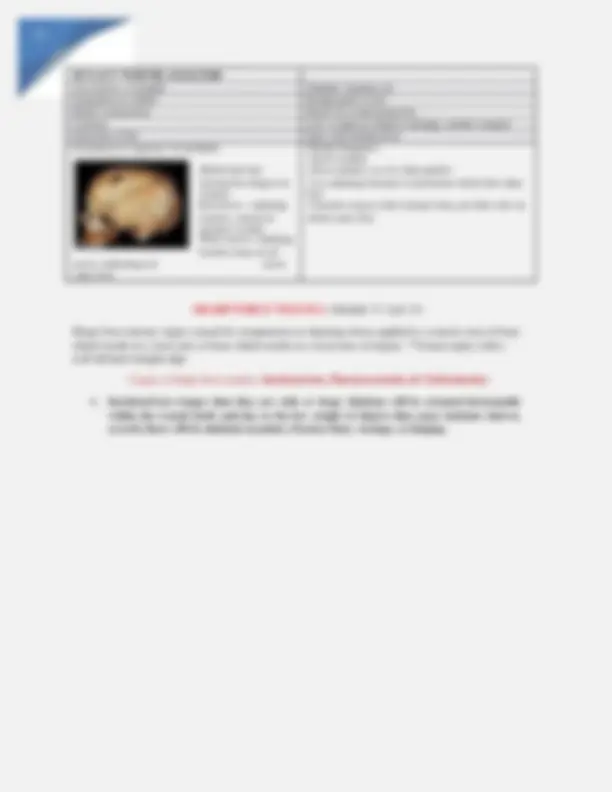
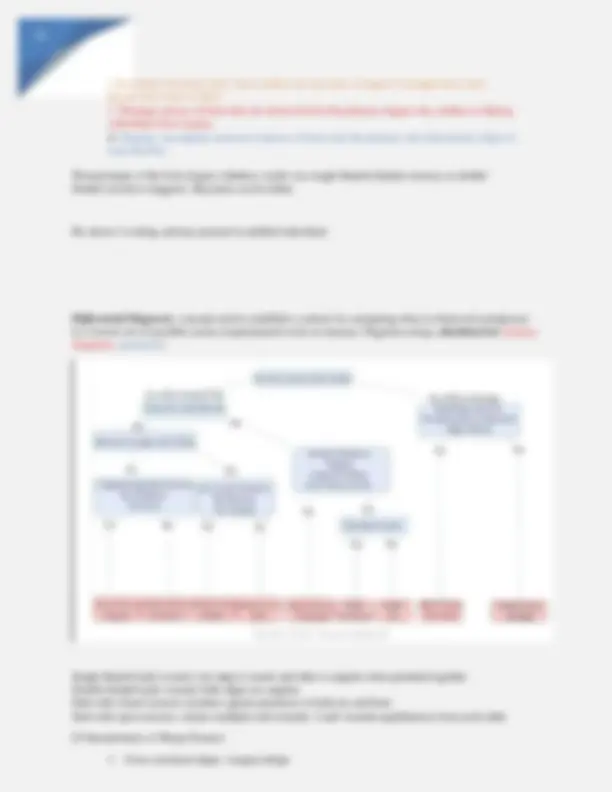

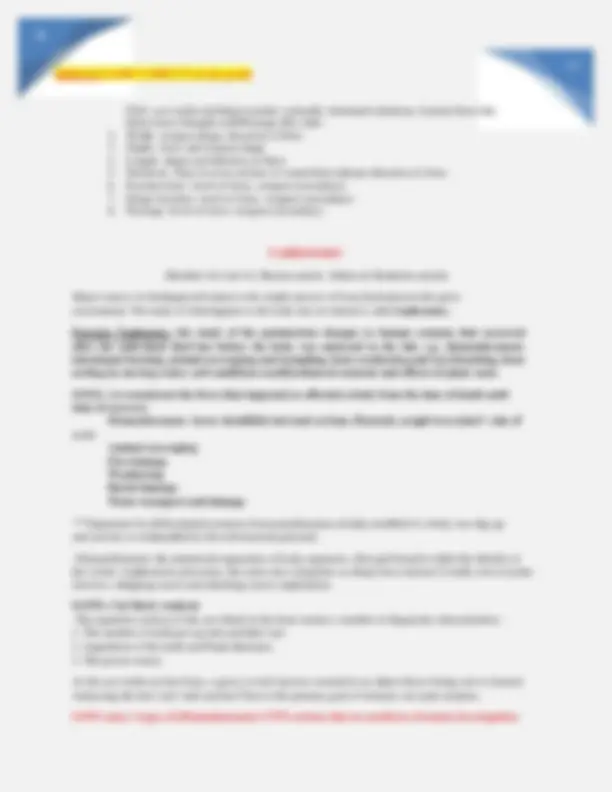
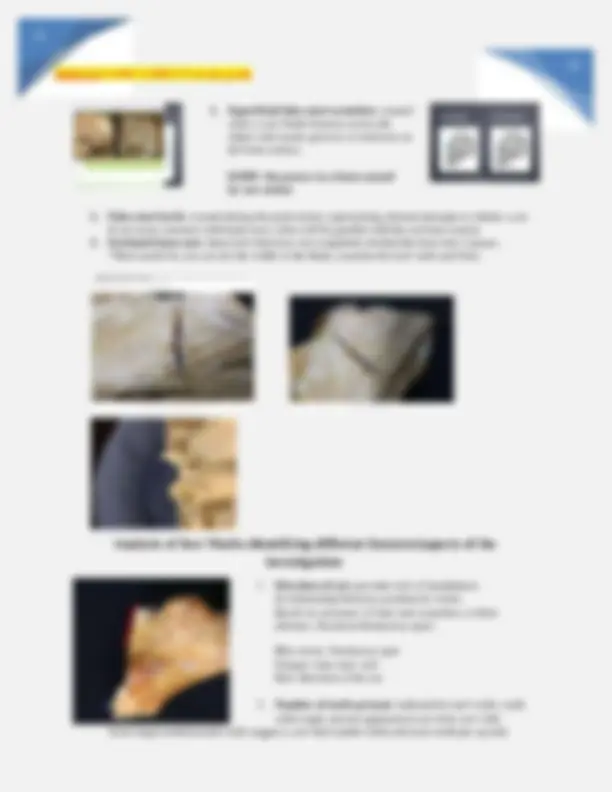
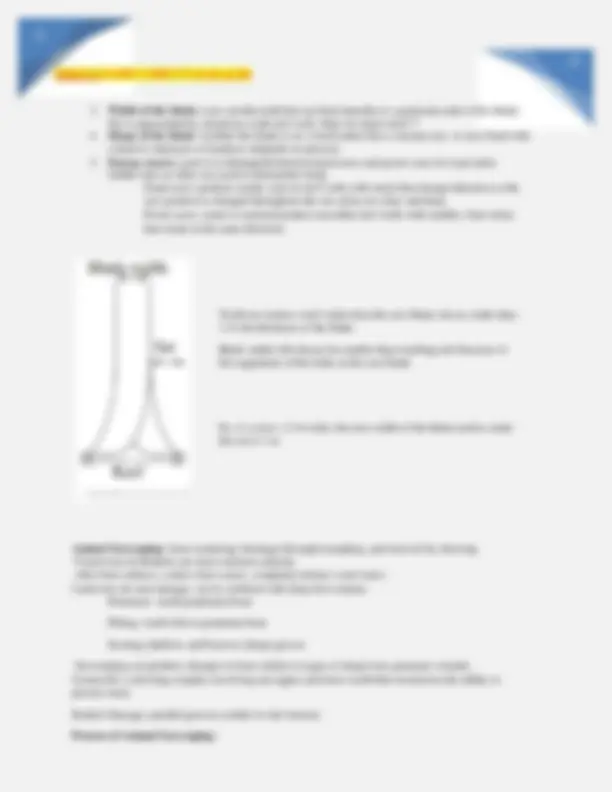
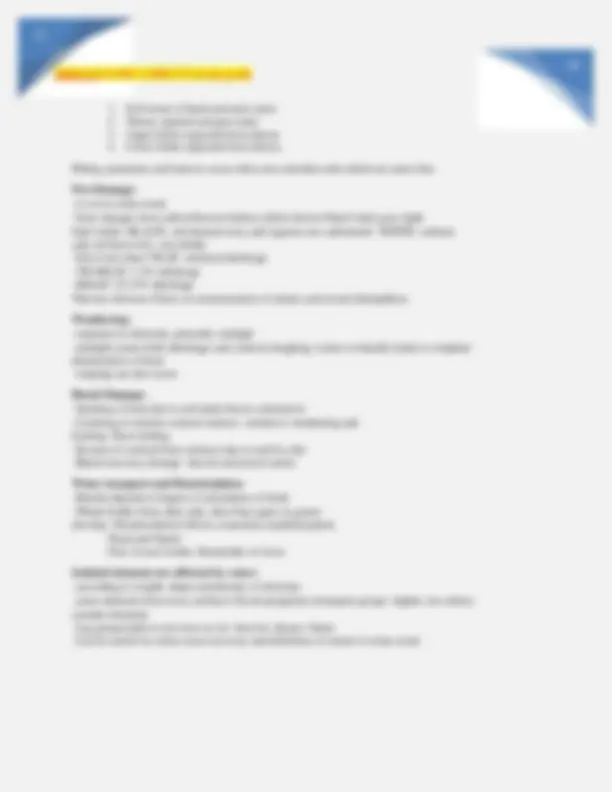
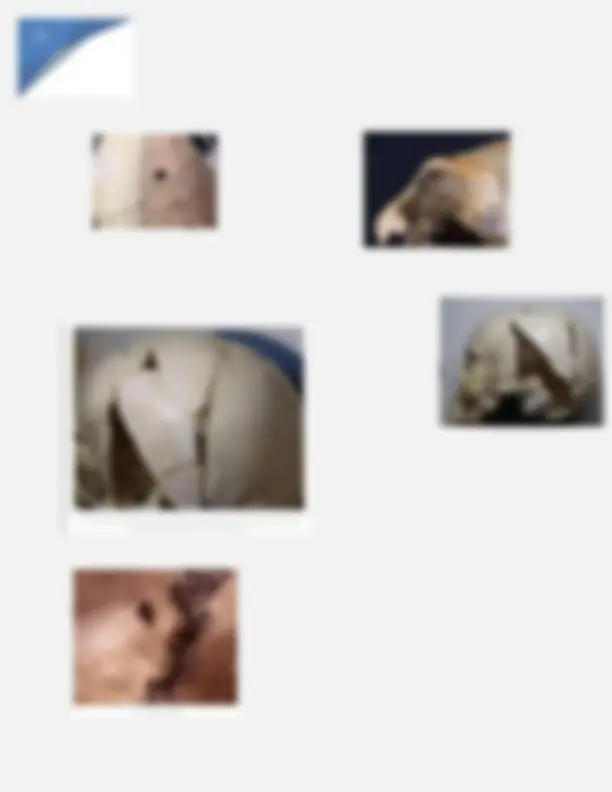


Study with the several resources on Docsity

Earn points by helping other students or get them with a premium plan


Prepare for your exams
Study with the several resources on Docsity

Earn points to download
Earn points by helping other students or get them with a premium plan
Community
Ask the community for help and clear up your study doubts
Discover the best universities in your country according to Docsity users
Free resources
Download our free guides on studying techniques, anxiety management strategies, and thesis advice from Docsity tutors
ASM 275- Forensic Anthropology Exam Study Guide Latest Update.
Typology: Exams
1 / 24

This page cannot be seen from the preview
Don't miss anything!

















ASM 275: Forensic Anthropology Exam 3 Study Guide TRAUMA: injury caused to the living tissue by an outside force. Projectile: bullets, arrows, spears Blunt force: clubs, bats Sharp force: knives, swords Basic Bone Trauma
ASM 275 EXAM 3 ASM 275 study guide
This includes some basic types of injury:
ASM 275 EXAM 3 ASM 275 study guide
Soft tissue wounds: three types caused by blunt force trauma
ASM 275 EXAM 3 ASM 275 study guide
temporal, Anterior temporal, Midfrontal region Blows to the face = LeFort Fractures: Lefort I: separates the upper teeth and alveolar bone from the rest of the skull; (from lower blow to the face) Lefort II: midface separates from the rest of the cranium; caused by an anterior blow to the midface Lefort III: separates the face from the cranial vault; caused by centrally focused blow to upper face Cranial Base Ring Fracture: body pushed into brain (tension) case or compressed. Ring shaped fragment of bone broken at bottom of skull ex: if you fall, and fall on head, your
ASM 275 EXAM 3 ASM 275 study guide
the smaller #=larger diameter of shell. Larger, heavier bullets do more damage.
ASM 275 EXAM 3 ASM 275 study guide
ASM 275 EXAM 3 ASM 275 study guide LOSE CONTACT: barrel is NOT placed firmly against the body and some powder allowed to escape.
Direct contact suggests suicide or execution style killing by gas build up in scarring. GAS BUILDUP FROM STELLATE SCARRING & MUZZLE BURNS; indicates a suicide style killing from DIRECT CONTACT Loose contact gunshot – gun held close to body but not directly touching it; there would be some burnt tissue from hot gunpowder around the wound and a little soot; small gunpowder burn diameter because some of the powder escapes the weapon as its discharged; a stellate wound is seldom observed. Skin gets indented from the force placed upon wound and has some space for the burned gunpowder to escape. Red circle: primary area of impact, skin indentation from gasses Blue circle: burning and soot Usually will see muzzle burns, soot around bullet hole and imprints from shape of muzzle to do firing (Provides info for murder weapon) Close Range Gunshot wounds: firearm is held away from person (2ft); Lose wound has muzzle burn, but close range DOES NOT If gun is more than 7in from body, you’ll see stippling (powder tattooing) but not soot (soot is lighter and will float away compared to gunpowder) Incomplete Contact Gunshot wound
Shotgun Injury: most destructive; they propel numerous tiny pellets (bird or buckshot) instead of a single bullet, at extremely high velocity.
2. Puncture/Stabs: result from objects being stabbed into body at perpendicular angle using objects like closed scissors, knives or ice picks. Even length and width dimensions; punctures have vertically oriented stiations, limited wastage, but secondary fracture and hinging may be present. Deeper than it is long
to heavy sharp Cleft/notches: result from chopping instruments being used attack person; axes, and other objects, resulting in combination of & blunt force trauma characteristics. Impact body at perpendicular angle, resulting in vertically oriented striations. Weight of objects means that secondary fracture lines, hinging and wastage are more likely to occur. One of the main differences between BLUNT & SHARP FORCE TRAUMA is that SHARP force objects (swords, machetes) produce long impact sites with clear straight lines; this is rarely seen with BLUNT force objects. A sharp instrument CUTS and divides as it penetrates; usually, there are no abrasions. A Blunt instrument abrades, crushes, and tears, often sparing small nerves, blood vessels and connective tissue which may be viewed as thin, delicate bridges within the wound (Laceration) Sharp force trauma (knife) vs Blunt force trauma (hammer) Hilt Mark: abrasion accompanying a sharp force injury Presence of fingernail scratches A Contusion may form as the result of a perpetrator’s hand striking the victim as the instrument penetrates deeply. 4 Criteria for ID type of sharp force trauma weapon:
Puncture - Ice pick (conical shape wound) Incision - knife
ASM 275 EXAM 3 ASM 275 study guide
Cleft - axe (wide and deep wounds; vertically orientated striations; fracture lines like blunt force) Straight wall/Wastage R/L sides